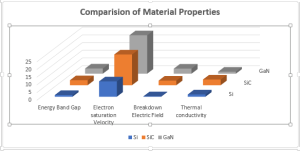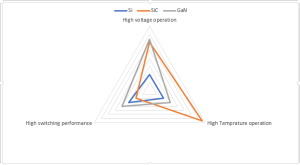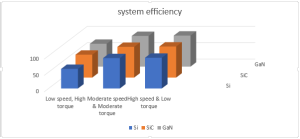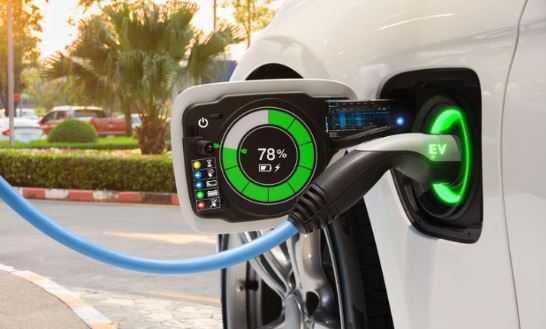Article Courtesy: Sterling Gtake E Mobility Limited
INTRODUCTION: Wide band gap semiconductors (SiC & GaN) are regarded as the next-generation power semiconductor for automotive applications due to their superior properties such as high switching frequency, very low switching loss, and better temperature handling capability. The implementation of Wide band gap semiconductors power devices in electric vehicles (EV) can reduce power loss and further improve the energy conversion efficiency.
Material Properties:

Wide band gap semiconductors (SiC & GaN) are regarded as the next-generation power semiconductor for automotive applications due to their superior properties such as high switching frequency, very low switching loss, and better temperature handling capability. The implementation of Wide band gap semiconductors power devices in electric vehicles (EV) can reduce power loss and further improve the energy conversion efficiency.
Material Properties:
1. Energy Band Gap: The energy required for electrons and holes to transition from the
valence band to the conduction band. A semiconductor with a large value is called a
wide-band-gap semiconductor.
2. Electron Saturation Velocity: Saturation velocity is the maximum velocity a charge
carrier in a semiconductor, generally an electron, attains in the presence of a very high
electric field. When this happens, the semiconductor is said to be in a state of velocity
saturation.
3. Breakdown Electric Field: Electrical breakdown of a substance occurs when high
an electric field is applied across an electrically insulating material resulting in material
ionization and current flow through the material due to the excessive electric field.
4. Thermal Conductivity: The thermal conductivity of the semiconductor material
is one of the parameters that define the thermal resistance of each heat flow path.
Thermal conductivity is the measure of ease by which heat flows through a specific
material. It is a material property that is independent of the material thickness.
A larger energy gap leads to a higher breakdown electric field, higher device-level breakdown voltages, lower on-state resistance, and faster switching speed. The large band gap also allows for higher temperature operation, Increased device-level current, and power densities.
The thermal conductivity of Wide band gap semiconductors is higher which Allows for better heat transfer from the semiconductor device and provides higher current/power densities.
High values of electron saturation velocity and electron mobility lead to faster switching,
improved conduction properties, reducing the reverse-recovery charge and the related
losses.
Material properties of Wide band gap semiconductors allow achieving higher inverter
power density, higher conversion efficiency, low specific on-state resistance, fast switching,
high-temperature operation capability, High blocking voltage, and Excellent conduction
characteristics.
APPLICABILITY OF WIDE BAND GAP INVERTERS:
So far, the Wideband gap inverter has proven to be a better choice than the Si inverter in terms of reducing energy consumption. However, the price of the Wideband gap device is
significantly higher than the Si device, and it is the major roadblock for its adoption in
automotive systems.
- SiC-based inverters can be used for high-current density and high-temperature applications.
- GaN-based inverter promising best-in-class breakdown voltage, specific on-state resistance, and switching speed.

Conclusion:

The system efficiency of the Wideband gap inverter is higher than the Si inverter in all operating conditions, especially in the low-speed range. The efficiency benefits offered by Wide band gap inverters can be translated into the reduction of the overall energy consumption, higher driving range, or a lower requirement on the installed battery energy storage.








